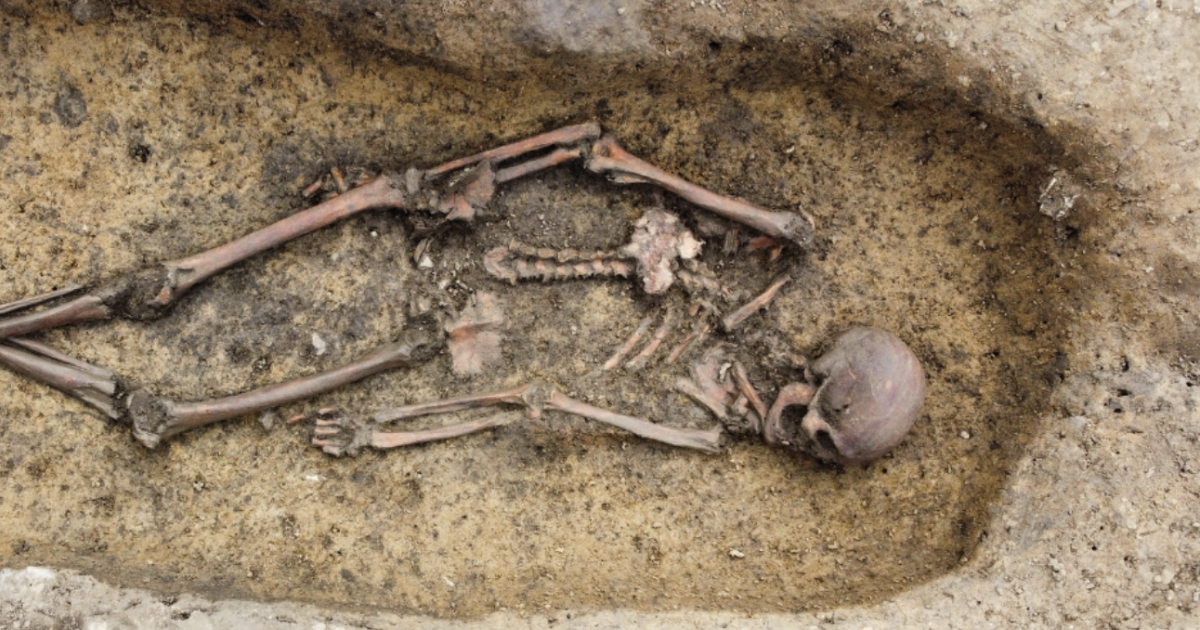Archaeologists in Denmark have unearthed a remarkable discovery: over 50 well-preserved Viking skeletons at a 2,000-square-meter burial ground dating back to the 9th and 10th centuries. This exceptional find, located on the outskirts of the village of Åsum, offers unprecedented opportunities to study the lives and journeys of these ancient seafarers. The remarkable preservation of the skeletons has allowed archaeologists to envision the burial practices of the era and to collect DNA samples for scientific analysis, promising insights into their genetic origins and potential familial ties. The discovery underscores the enduring fascination with the Viking era, with researchers continually uncovering new details about their complex society and their impact on European history.
A Unique Archaeological Treasure
The discovery of the Viking burial ground at Åsum is remarkable not only for its scale but also for the exceptional state of preservation of the skeletal remains. Archaeologists are ecstatic about the potential for detailed scientific analysis, including the extraction of DNA samples.
Unlocking the Past with DNA
DNA analysis of the skeletons is expected to yield invaluable information. It could shed light on the geographical origins of the buried individuals, potentially revealing migratory patterns and connections across Viking settlements. This information could rewrite our understanding of Viking migration routes and their interaction with other cultures.
Family Ties Revealed
Perhaps even more intriguing is the possibility of identifying familial relationships within the burial ground. By analyzing DNA samples, archaeologists hope to establish whether the individuals buried there were related, potentially offering insights into family structures and burial practices of the Viking age.
A Glimpse into Viking Life
The objects buried alongside the skeletons offer further glimpses into Viking culture and the lives of these individuals.
Social Hierarchy in the Burials
The varying burial practices and artifacts found with the skeletons point towards a stratified society with distinct social ranks. One notable example is the burial of a woman in a wagon hull, likely the wagon she used during her lifetime. The accompanying jewelry, iron key, and a small glass shard suggest a position of wealth and stature within the community.
Everyday Objects as Treasures
Other skeletons were buried with everyday objects, like a metal ring, a single red glass bead, or a special buckle, highlighting the importance these items held to their owners. These seemingly mundane objects offer insights into the craftsmanship and artistic styles of the period, further revealing details of Viking daily life.
A Continuing Saga of Discovery
This extraordinary discovery reinforces the ever-evolving nature of archaeological exploration and our growing understanding of Viking history. The exceptional preservation of the skeletal remains, coupled with the potential for DNA analysis, provides an unparalleled opportunity to reconstruct Viking lives and unravel the complexities of their social structures. Future research may even shed light on the specific events leading to the death of the individuals and the reasons for their placement at this specific site. As archaeologists delve deeper into the wealth of information at Åsum, we can anticipate new and captivating insights into the Viking era and its fascinating characters.
Take Away Points
- Archaeologists have unearthed a remarkable Viking burial ground containing over 50 well-preserved skeletons.
- The discovery offers a unique opportunity to study the lives and journeys of Vikings through DNA analysis, providing insight into their origins and potential familial ties.
- The variety of grave goods and burial practices highlight the existence of social hierarchy within Viking society.
- This exceptional discovery continues to underscore the enduring fascination with the Viking era and its profound influence on European history.









